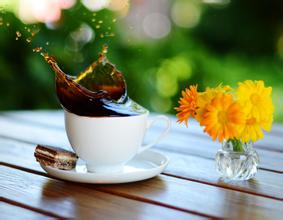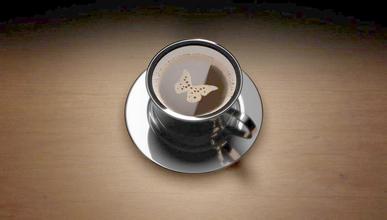Where do the best Geisha coffee beans come from?
Where are the best Geisha coffee beans produced in the world?
Rosa coffee raw beans have a very beautiful blue-green, jade-like warm texture, smell of fresh grass, peach, berry and oolong tea that most coffee beans do not have. It seems that aroma and taste of this kind of things need to be associated with association, but the faint smell of tea is the roasted cooked beans that we can obviously feel, and there will be some "wrinkles". Beans with this "sexy wrinkle" are all designed to highlight their original flavor and sour fruit, but if the quality of the raw bean itself is not high, it will produce some miscellaneous flavors, such as rotten soil, grass and dry taste, which the baker should try to avoid. The baked rose summer has charming lemon and citrus aromas and super sweet honey cream aromas of rose summer, with the characteristics of rose and jasmine. Can also bring out honey pomelo and citrus aromas, light baked with nutty aromas The wet aroma also has the smell of hazelnut, and more floral characteristics emerge. In terms of taste and flavor, compared with the previously rising aroma, it may be slightly mild and subtle in the early stage, and the flower and fruit flavor will gradually increase as the temperature drops, and the cold aroma is excellent (sweet preserved fruit, rose fruit, orange glaze jam, strawberry jam, silk pine, cherry, vanilla and rose gradually fade, leading to lemon-flavored fruit). This is a coffee that can be praised by a large number of adjectives, the sweetness of the silk, which is testing the brightness of this coffee, especially when it is lightly roasted.
Rose Xia won the championship again, and the bidding price was 130 US dollars per pound, the highest price in the history of competition beans. It is reported that the next Panamanian national treasure bean competition will be divided into two groups: rose summer and non-rose summer, so as not to be robbed of the brilliance of other varieties by rose summer. Rosa is a member of the Tibika family, but it became famous more than 70 years after leaving Ethiopia, and fulfilled the saying that Ethiopia is a treasure trove of Arabica genes. Giving a variety to go abroad is enough to stir up trouble in the coffee market.
Geisha: a variety of late blossoms. In 1931, he was exported to Kenya in obscurity from Geisha Mountain Mountain in southwestern Ethiopia (coincidentally synonymous with Japanese geisha). He traveled to Tanzania and Costa Rica, and was transplanted to Panama in the six ○ years. It took him nearly half a century to make a splash, defeating the victorious armies such as Bourbon, Kaddura, Kaduai, Tibica and so on. Won the first prize of two ○○ five, two ○○ six and two ○○ seven Panamanian national treasure bean cup test competition in one breath. In the seventh year of ○○, the International famous Bean Cup Test sponsored by the American Fine Coffee Association won the championship again, and the bidding price was even sold at US $130 per pound, setting an all-time record for the price of competition beans. It is reported that the next Panamanian national treasure bean competition will be divided into two groups: rose summer and non-rose summer.

Important Notice :
前街咖啡 FrontStreet Coffee has moved to new addredd:
FrontStreet Coffee Address: 315,Donghua East Road,GuangZhou
Tel:020 38364473
- Prev

Introduction to the Manor of Flavor description by the method of Grinding scale of Coffee beans in Honduras
The geographical conditions of Honduras are no less than those of its neighboring coffee-producing countries such as Guatemala and Nicaragua. There are 280000 hectares of coffee plantations in Honduras, mainly small coffee plantations, most of which are less than 3.5ha. These coffee plantations account for the whole coffee production in Honduras.
- Next

Taste and Flavor description of Honduran Coffee beans introduction to the producing areas of Grinding scale varieties
Taste and Flavor description of Honduran Coffee beans Grinding Calibration Variety producing areas introduce the Honduran national flower carnation (Carnation family), carnation (scientific name: Dianthus caryophyllus) is carnation, also known as lion head carnation, musk carnation, carnation, Dutch carnation. It belongs to Caryophyllaceae and Dianthus, distributed in temperate zone of Europe and Chinese mainland in Fujian, Hubei and other places.
Related
- Detailed explanation of Jadeite planting Land in Panamanian Jadeite Manor introduction to the grading system of Jadeite competitive bidding, Red bid, Green bid and Rose Summer
- Story of Coffee planting in Brenka region of Costa Rica Stonehenge Manor anaerobic heavy honey treatment of flavor mouth
- What's on the barrel of Blue Mountain Coffee beans?
- Can American coffee also pull flowers? How to use hot American style to pull out a good-looking pattern?
- Can you make a cold extract with coffee beans? What is the right proportion for cold-extracted coffee formula?
- Indonesian PWN Gold Mandrine Coffee Origin Features Flavor How to Chong? Mandolin coffee is American.
- A brief introduction to the flavor characteristics of Brazilian yellow bourbon coffee beans
- What is the effect of different water quality on the flavor of cold-extracted coffee? What kind of water is best for brewing coffee?
- Why do you think of Rose Summer whenever you mention Panamanian coffee?
- Introduction to the characteristics of authentic blue mountain coffee bean producing areas? What is the CIB Coffee Authority in Jamaica?

